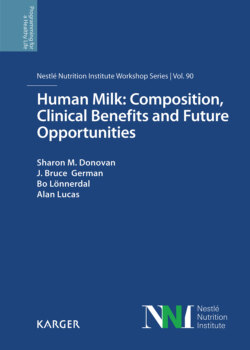Читать книгу Human Milk: Composition, Clinical Benefits and Future Opportunities - Группа авторов - Страница 34
На сайте Литреса книга снята с продажи.
Abstract
ОглавлениеCurrently accepted “best practice” for managing breastfeeding effectively (WHO/UNICEF) is largely based on a historical view of how babies remove milk from the breast, which had persisted for several centuries. The collective wisdom was verified by imaging studies in the 1950s and 1980s, to reach a consensus view – clinical management principles, based on such research, have proved highly effective. Over the past decade, the mechanics of suckling, and how the baby removes milk from the breast, have been revisited, using modern imaging technology and by the application of engineering-based techniques, which seek to develop explanatory models of how suckling works. While the imaging studies have caused us to expand our view of the process, the engineering-based models have proved somewhat contradictory, tending to undermine the new consensus. Such models are complex, mathematically difficult to evaluate, and without simple lessons by which clinicians/practitioners can update their practice. This presentation will seek to demonstrate the current agreement between imaging studies, and elucidate recent engineering-based models of milk extraction, to achieve a fresh consensus – a “revised suckling physiology.” Certain limitations of the engineering-based models will be addressed, showing why they do not yet provide a definitive explanation of how babies remove milk from the breast. The encouraging news, however, is that current “best practice” for breastfeeding does not need to be updated; in fact, a new conclusion indicates that the guiding principles are even more relevant than before.
© 2019 Nestlé Nutrition Institute, Switzerland/S. Karger AG, Basel
